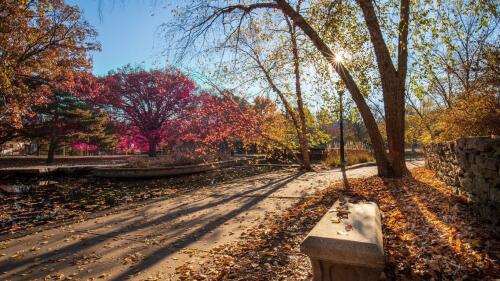Remember ghost signs? Think: old painted signs that give windows into history. We last visited the River Market, but back by popular demand (read: a poll you took five months ago), we’re returning to the West Bottoms.
Union Street
One of the oldest streets in the city is also one of the most ghostly — faded signs clinging to the sides of nearly every building, some ~150 years old. To understand the signs, let’s drive by the area’s history + decline.
The Union Depot — aka the old Union Station — opened in 1878, bringing lots of traffic and commerce to the area. With the stockyards in full “moo,” this area brought in 90% of KC’s revenue. Naturally, storage facilities had to accommodate all the incoming goods, so warehouses cropped up around this high-volume railyard.
After a flood in 1903 swamped the area, leaders wanted to build a new train station (Union Station) away from the floodplain. Union Depot was therefore razed in 1915. Most of the booming business evacuated, leaving behind warehousing + livestock businesses.
The trains + warehouses are still there. However, the buildings have changed hands over time. A lawsuit from 1960 states Liberty Storage Co. (seen in the photo) was looking to get out of the business. An article from 2001 reports Laramie Tires — clearly a much more recent ghost sign — left the West Bottoms for North Kansas City.
While the exact pasts of these structures remain as muddled as their signs, the future may gain clarity — the Ship’s success and a development firm’s new office allude to a revitalization.
Charles P. Shipley Saddlery and Mercantile Company
Charles Pervine Shipley was born in Ohio and moved to KC when he was 20, where he borrowed $300 and started a leather goods manufacturing company that bore his name. He expanded and moved into a new three-story building in 1910, roughly catty corner from the Livestock Exchange Building + directly across from what is now The Yards Apartments — at 1660 Genessee St.
After a couple of not-so-good business moves, Charles died and passed the business onto his son. It ultimately closed in 1971. The building’s bottom floor windows currently display leasing signs.
Ghost sign puzzle
Calling all historians with 20/20 vision. Can you make out what this sign says? Layers of faded paint have obscured what may be many names. We can see “Miller & Co.” but it appears incomplete — how about you? Let us know, and we might do a story on this spot next.














